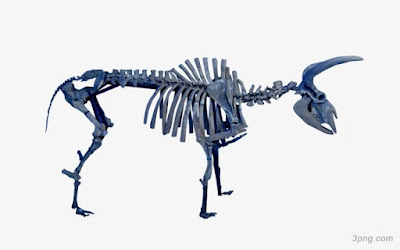Is this Really a Megaloceros?
Picture from Don's Maps The black stag is one of the most well known pieces of parietal art from the Lascaux caves. This iconic painting occupies a prominent position in a section of Lascaux known as the Axial Gallery. Many writers on the iconography of Lascaux refrain from assigning a particular species to this representation, "stag" being a generic term often used to refer to representations of deer in European cave art; however, in every instance I have seen where the black stag is suggested to represented a particular species, that species is invariably the extinct giant deer, Megaloceros giganteus . It's easy to see why this interpretation has so much traction, the antlers of the black stag are certainly large and imposing, and the size of the painting, especially compared to the smaller depictions of deer found in the cave, suggests an animal of great bodily magnificence . However, I think a closer consideration of the particulars of the painting reveal...

